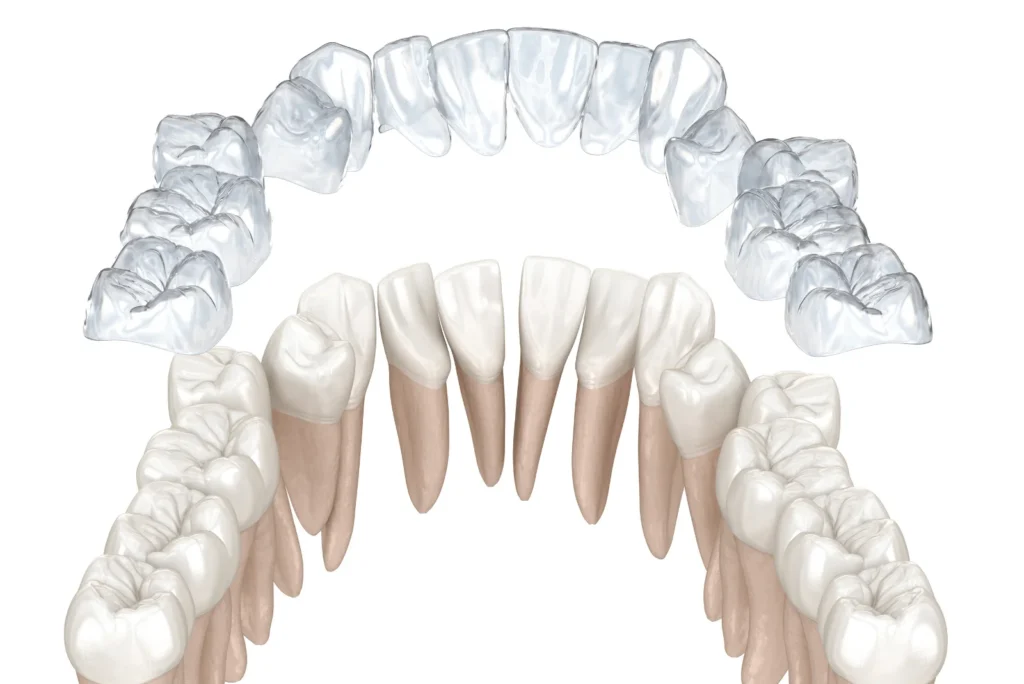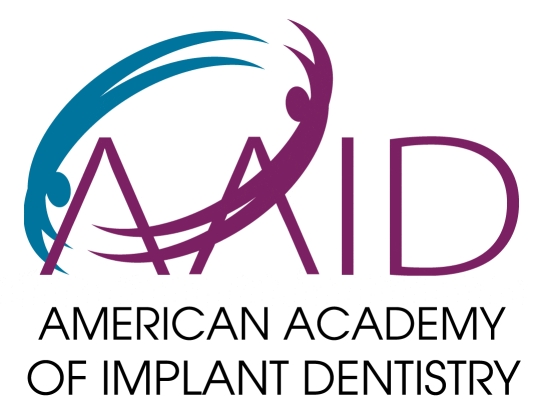Has anyone lost a tooth with Invisalign, and what happens if I lose a tooth in the middle of Invisalign treatment? As a dentist at Lansdowne Family Dental with extensive experience in Invisalign treatment, these are two of the most concerning questions I encounter from patients during consultations. While these scenarios deserve serious consideration, it’s important to address them with accurate, evidence-based information rather than fear or speculation.
Tooth loss during Invisalign treatment is extremely rare, but understanding the circumstances that could lead to such situations and how they’re properly managed is crucial for patient peace of mind. Whether you’re worried about accidental tooth loss due to trauma or concerned about Invisalign potentially causing tooth loss, this comprehensive guide will provide you with the professional insights you need to navigate your treatment with confidence.
Let’s explore the facts about Invisalign and tooth stability, address common misconceptions, and discuss the proper protocols for handling any unexpected dental emergencies during your orthodontic journey.
Understanding Invisalign: The Basics and Beyond
Before we dive into the tooth loss question, let’s review what Invisalign is and how it works:
Invisalign is a modern orthodontic treatment that uses clear, removable aligners to gradually shift teeth into their desired positions. At Lansdowne Family Dental, we use advanced 3D imaging technology to create custom-made aligners for each patient. These aligners apply gentle, consistent pressure to move your teeth over time.
Does Invisalign Cause Tooth Loss?
Let me be clear: Invisalign does not cause tooth loss in healthy mouths. This is a common misconception that I’d like to address directly and comprehensively.

The Truth About Tooth Movement During Invisalign Treatment
Normal Tooth Mobility:
- During any orthodontic treatment, including Invisalign, it’s normal for teeth to feel slightly loose.
- This sensation is a sign that the treatment is working, not a cause for alarm.
- The periodontal ligament, which connects the tooth to the bone, temporarily loosens to allow for movement.
Controlled Force:
- Invisalign applies gentle, controlled force to move teeth.
- This force is carefully calculated by advanced software to move teeth safely without causing damage.
- The force is distributed evenly across the tooth surface, minimizing the risk of root damage.
Temporary Sensation:
- The feeling of looseness typically subsides once your teeth settle into their new positions.
- Bone remodeling occurs around the teeth, stabilizing them in their new positions.
- This process, known as ossification, usually takes a few months after the active treatment phase.
The Science Behind Tooth Movement During Invisalign
To better understand why Invisalign doesn’t cause tooth loss, let’s delve into the biology of tooth movement:
Pressure and Tension Sides:
- When force is applied to a tooth, it creates a pressure side and a tension side.
- On the pressure side, osteoclasts break down bone.
- On the tension side, osteoblasts build new bone.
Bone Remodeling:
- This process of bone breakdown and formation allows the tooth to move through the bone.
- It’s a natural biological process that doesn’t compromise the tooth’s stability in the long term.
Periodontal Ligament Adaptation:
- The periodontal ligament, which anchors the tooth to the bone, adapts to the new position.
- This adaptation ensures the tooth remains firmly held in place after treatment.
👉 Book an Invisalign Appointment Today!
When Tooth Loss Might happen during Invisalign: Pre-Existing Conditions
In rare cases where tooth loss occurs during Invisalign treatment, it’s usually due to pre-existing conditions. It’s crucial to understand these potential risk factors:
Periodontal Disease:
- Severe gum disease can lead to bone loss and tooth instability.
- Symptoms include red, swollen gums, bleeding when brushing, and persistent bad breath.
- Regular dental check-ups can catch periodontal disease early.
Severe Decay:
- Untreated cavities can weaken teeth, making them more susceptible to movement-related issues.
- Regular dental exams and good oral hygiene can prevent decay from progressing.
Root Resorption:
- This rare condition can cause tooth roots to shorten.
- It’s more common in patients who have had previous orthodontic treatment.
- Regular x-rays during treatment can monitor for signs of root resorption.
Bone Loss:
- Significant bone loss, often due to advanced periodontal disease, can compromise tooth stability.
- A thorough examination, including x-rays, can assess bone levels before treatment.
Bruxism (Teeth Grinding):
- Chronic teeth grinding can weaken teeth and their supporting structures.
- We may recommend a night guard to protect your teeth during Invisalign treatment if you have bruxism.
Our Approach at Lansdowne Family Dental: Ensuring Safe and Effective Treatment
To ensure the safety and effectiveness of your Invisalign treatment, we follow a comprehensive approach:
Thorough Initial Assessment:
- We conduct a detailed examination of your oral health before starting treatment.
- This includes a full set of x-rays, periodontal probing, and assessment of tooth mobility.
- We check for signs of decay, gum disease, and other potential issues that could affect treatment.
- We use advanced imaging to plan your treatment precisely.
- Our iTero scanner creates a highly accurate 3D model of your teeth and gums.
- This allows us to visualize your treatment outcome and plan each tooth movement carefully.
- We monitor your progress closely throughout the treatment.
- These appointments allow us to check for any signs of excessive tooth mobility or other concerns.
- We can make adjustments to your treatment plan if needed.
- We adjust your treatment plan as needed to ensure optimal results.
- This may include changing the sequence of tooth movements or adjusting the force applied.
- Our goal is to achieve the best results with the least risk to your oral health.
- We provide detailed instructions on aligner wear and care.
- We educate you on proper oral hygiene practices during treatment.
- We encourage you to contact us immediately if you have any concerns during treatment.
3D Imaging:
Regular Check-ups:
Personalized Care:
Patient Education:
To schedule your Invisalign treatment in Ashburn, Leesburg, or Lansdowne, VA, choose Lansdowne Family Dental for quality dental care. We offer various dental services with a patient-centric approach. Start your dental journey with us. Contact us!
Tips for Successful Invisalign Treatment Without Teeth Loss
To maximize the benefits of your Invisalign treatment and minimize any risks:
Wear Your Aligners:
- Aim for 20-22 hours of daily wear.
- Remove aligners only for eating, drinking (except water), and oral hygiene.
- Consistent wear ensures steady progress and reduces the risk of teeth shifting back.
- Brush after every meal before reinserting your aligners.
- Floss at least once daily to remove plaque between teeth.
- Use an antiseptic mouthwash to reduce bacteria in your mouth.
- Rinse aligners every time you remove them.
- Clean aligners daily with a soft toothbrush and lukewarm water.
- Avoid hot water, which can warp the plastic.
- Don’t miss your scheduled appointments.
- These visits are crucial for monitoring your progress and addressing any issues promptly.
- If you experience unusual discomfort or mobility, let us know immediately.
- Early intervention can prevent minor issues from becoming major problems.
- Wear your retainers as directed after active treatment.
- This helps maintain your new smile and prevents teeth from shifting back.
- Eat a balanced diet rich in calcium and vitamin D for strong teeth and bones.
- Avoid excessive sugary or acidic foods that can increase the risk of decay.
Practice Good Oral Hygiene:
Clean Your Aligners:
Attend Check-ups:
Report Concerns:
Follow Post-Treatment Instructions:
Maintain a Healthy Diet:
The Long-Term Benefits of Invisalign
When used correctly, Invisalign can provide numerous benefits beyond just straightening your teeth:
- Improved Bite Alignment: Correcting malocclusion can reduce wear on teeth and improve chewing efficiency.
- Enhanced Oral Hygiene: Straight teeth are easier to clean, potentially reducing the risk of decay and gum disease.
- Boosted Self-Confidence: A beautiful smile can significantly improve self-esteem and social interactions.
- Potential Reduction in TMJ Issues: Proper alignment may alleviate jaw pain and headaches associated with TMJ disorders.
- Better Overall Health: Good oral health is linked to better general health, including reduced risk of heart disease and diabetes.
Addressing Common Concerns
Let’s address some common questions and concerns about Invisalign and tooth stability:
I’ve heard teeth can become loose during treatment. Is this dangerous?
- Some degree of looseness is normal and necessary for tooth movement.
- This looseness is temporary and not a sign of permanent damage.
Does Invisalign Require Tooth Extraction?
- No, Invisalign does not automatically require tooth extraction. In fact, many Invisalign cases are completed successfully without removing any teeth. However, the need for extraction depends on your specific orthodontic situation, the severity of crowding, and your treatment goals.
Can Invisalign cause root resorption?
- While any orthodontic treatment carries a small risk of root resorption, Invisalign’s controlled force minimizes this risk.
- We monitor for signs of root resorption throughout treatment.
Will my teeth be weaker after Invisalign treatment?
- No, your teeth will not be inherently weaker after treatment.
- Once teeth settle into their new positions, they are just as strong as before.
Is Invisalign safe for patients with previous dental work?
- In most cases, yes. We assess each case individually to ensure safety.
- Patients with crowns, bridges, or implants may still be candidates for Invisalign.
How long does it take for teeth to stabilize after treatment?
- Most patients’ teeth stabilize within 3-6 months after active treatment.
- Wearing retainers as directed is crucial for maintaining stability.
Conclusion: Trust the Process, Trust Your Dentist
At Lansdowne Family Dental, we’re committed to providing safe, effective orthodontic care. Invisalign is a proven treatment that, when administered by experienced professionals, poses minimal risk to your dental health. Our team stays up-to-date with the latest research and techniques to ensure you receive the best possible care.
If you have concerns about Invisalign or any other dental treatment, we encourage you to schedule a consultation with us. We’re here to answer your questions, address your concerns, and help you achieve the healthy, beautiful smile you deserve.
Remember, your oral health is our top priority. With proper care, professional guidance, and adherence to treatment protocols, Invisalign can be a safe, effective way to transform your smile without the risk of tooth loss. Your journey to a straighter, healthier smile is a partnership between you and your dental team, and we’re here to support you every step of the way.






